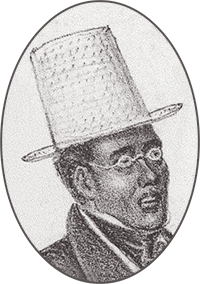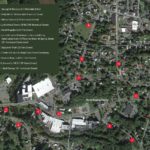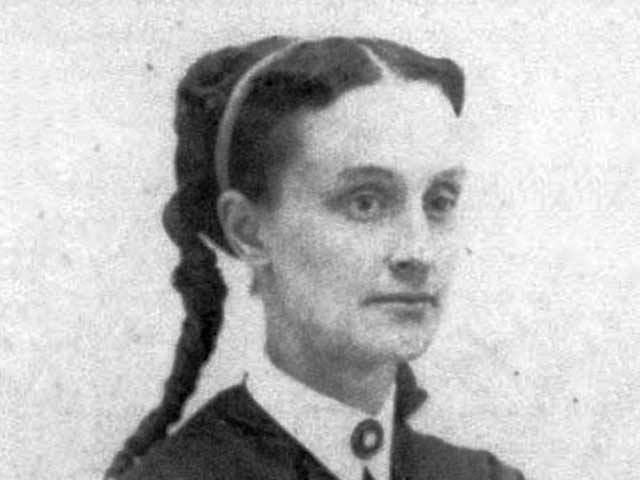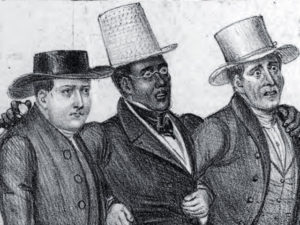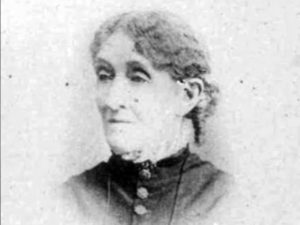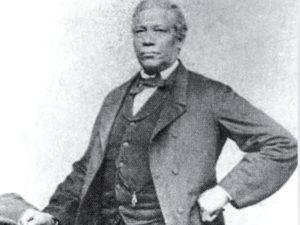“We Are Here to Honor Liberty
and Denounce Slavery”
An Interactive Middle and High School Curriculum
and Denounce Slavery”
An Interactive Middle and High School Curriculum
We regularly host visiting classrooms at our museum in Florence and share the history we interpret. When school groups arrive, we orient them at our museum and then lead them on walking tours around the village to sites connected to people and happenings. We present a narrative of events based on our sources.
This curriculum offers a new approach, it puts your students in the driver’s seat. They learn the same rich history and they own it. They create their own narratives by interpreting the same sources we use, and they lead their own walking tours!
HOW IT WORKS
We offer complex and nuanced history at the Ruggles Center. Your students are now being asked to interpret and present it themselves. Here’s how it works:
We have divided our walking tour into eleven stops. Each stop is connected to an important person in the larger story we tell. Students get into small groups at school and create their own short biographies of the eleven. Each group is assigned a different Source Packet dedicated to one of those biographies. Each packet contains edited primary source documents paired with guiding questions. Students extract the information they need to make small group presentations where that history happened in Florence.
Most of the work happens in the classroom before students get on the bus. Teachers get what they need to help their students make best use of our materials. They may also invite a Ruggles Center scholar into the classroom to help introduce students to our history. Classes that are unable to visit Florence are also welcome to use this curriculum. Contact us about additional support for distance learning.
SOURCE PACKETS
Our curriculum is comprised of eleven Source Packets. These are self-contained units of learning designed for small groups of two to four students. The eleven units fit together to cover the larger story we tell at the Ruggles Center. Each packet contains excerpted primary source documents by or about a person connected to the Northampton Association.
The documents in each packet are preceded by nesting sets of questions: A larger, open-ended question at the beginning posits a theme, or strand in the larger story of the Association that this particular biography sheds light on. It is followed by a set of guiding questions that separate this inquiry-based process into discrete categories. Each guiding question is followed by a set of supporting questions that direct students to specific passages for information.
The documents are almost wholly primary source. They consist of letters, Association papers, memoirs, census records, newspaper articles, published writings, images and more. The eleven profiles students are creating represent a diverse group of perspectives.
“I have had the pleasure of helping six hundred persons in their flight from bonds. In this, I have tried to do my duty, and mean still to persevere, until the last fetter shall be broken, and the last sigh heard from the lips of a slave.”
WHY THIS HISTORY MATTERS
Sadly, the history we share remains terribly relevant in today’s classrooms. The story of the Northampton Association is the story of the struggle for equal rights of citizenship for all Americans. It is a study in civic engagement and in the expression of dissenting views in a democracy. It is about seeking out what unites us rather than what divides us.
The stories students share with one another on their walking tours offer us inspiration. This was that “small group of thoughtful, committed citizens” that Margaret Mead wrote about a century later. These compelling figures endured hardship, ridicule and in some cases attack for stands they took against slavery.
It matters that this history happened in our backyard. It is remarkable that the men and women profiled in the packets were clustered in this one place at one time. Local, biography-based history has the power to make abstract ideas concrete and accessible to more students. It empowers young people to learn that change is possible using principled means.
“At Northampton I worked under Sam Hill, one of the best anti-slavery men in that abolition community. I was with them heart and soul for anything concerning human right, and my belief is in me yet, and can’t get out.”
YOUR VISIT
Your students’ work with their Source Packets culminates in a visit to Florence where they lead their own walking tours around the village. They are greeted at the David Ruggles Center, an accessible house museum located in the heart of the Historic District. They orient themselves while exploring our exhibits, reading room and archives.
There are eleven sites connected to each of the figures profiled in the Source Packets within walking distance of the museum. The village of Florence is compact and remarkably well preserved. Almost all the houses belonging to Association members are still standing. Our route is fully connected by sidewalks and pedestrian crossings.
If time permits, your class may also visit our Childs Garden across from the Austin Ross Homestead, a five-minute drive from the Ruggles Center. We grow heirloom crops where the Association did on land donated by the Florence Community Garden. The Ross home, surrounded by municipal playing fields open to the public, is a documented stop on the Underground Railroad.
REMOTE LEARNING
Our Curriculum can be adapted into a quality remote learning experience. The Source Packets students work with are self-contained units of learning that support independent study. Students can collaborate within and among small groups online to interpret our sources and form their own narratives.
The main difference is that instead of presenting their findings at historic sites in Florence, small groups present to a virtual classroom. They can also produce short video presentations that are shown and discussed in a live format. A Ruggles Center scholar is prepared to assess options with teachers and to participate in virtual classroom discussions.
USER’S GUIDE
- Download our free course materials.
- Introduce your students to our history and to their projects.
- Form small groups that prepare short oral presentations using their Source Packets.
- Plan a field trip to Florence where your students lead their own walking tour.
“I am fully aware of the unpopularity of the task I have undertaken; and though I expect ridicule and censure, it is not in my nature to fear them.”
GET IN TOUCH
Please let us know if you are planning to use this curriculum. It is designed to culminate in a school visit to Florence, but other arrangements are possible. A Ruggles Center scholar can visit your classroom to help introduce students to this material.
Please share questions and ideas with us using this form or email us at info@davidrugglescenter.org.

